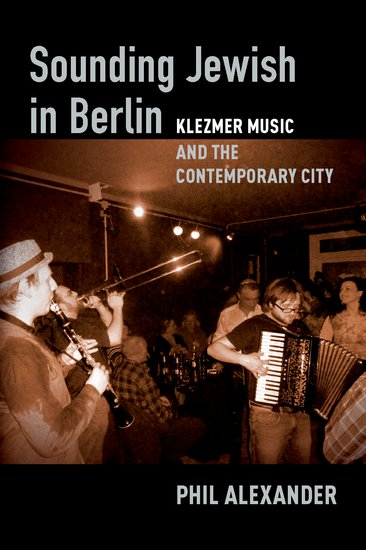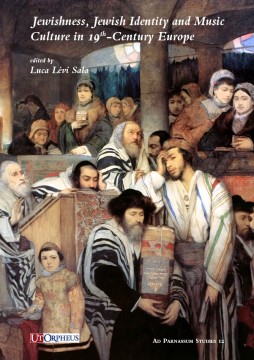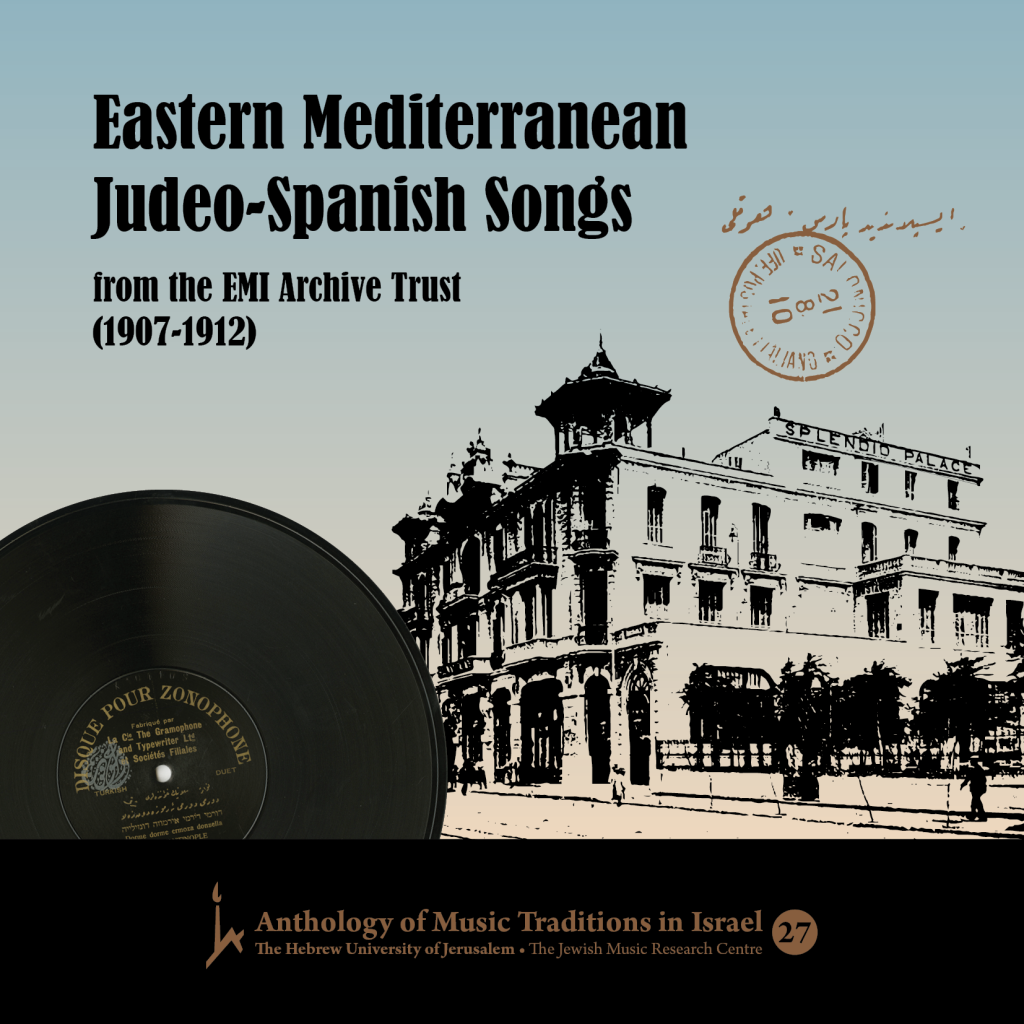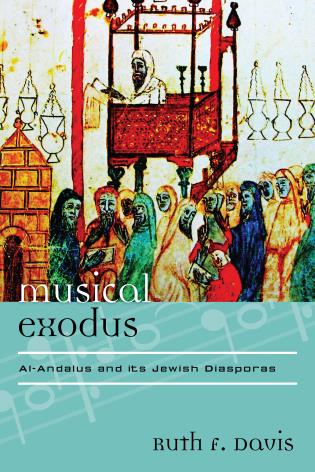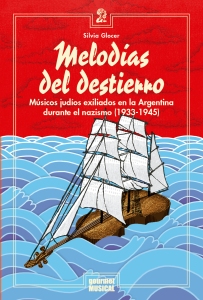You are currently browsing musicajudaica’s articles.
La Memoria Cantata: A Survivor from Warsaw di Arnold Schönberg nell’Europa del dopoguerra. Joy H. Calico. Edizione italiana a cura di Paolo Dal Molin, traduzione di Silvia Albesano. Milan: Il Saggiatore. 2023.
Reviewed by Jesse Rosenberg

On the list of musical works inspired by the Shoah, Arnold Schoenberg’s A Survivor from Warsaw has long held a special status. The realistic description of a roundup of Jews in the Warsaw ghetto, the concluding choral Shema that constitutes one of the strongest testimonies of Schoenberg’s re-commitment to Judaism in the last two decades of his life, and the combination of advanced twelve-tone technique with Sprechstimme, one of the composer’s earliest innovations, unite to make a powerful impression on listeners to this day. In her 2014 monograph Arnold Schoenberg’s “A Survivor from Warsaw” in Postwar Europe, dedicated to the reception of this work, Joy H. Calico documents in detail the effect of this work on European critics and audiences, and subjects it to a thorough analysis.
Read the rest of this entry »Let Our Music Be Played: Italian Jewish Musicians and Composers under Fascism. Edited by Alessandro Carrieri and Annalisa Capristo. Cham, Switzerland: Palgrave Macmillan. 2021.
Reviewed by Jesse Rosenberg
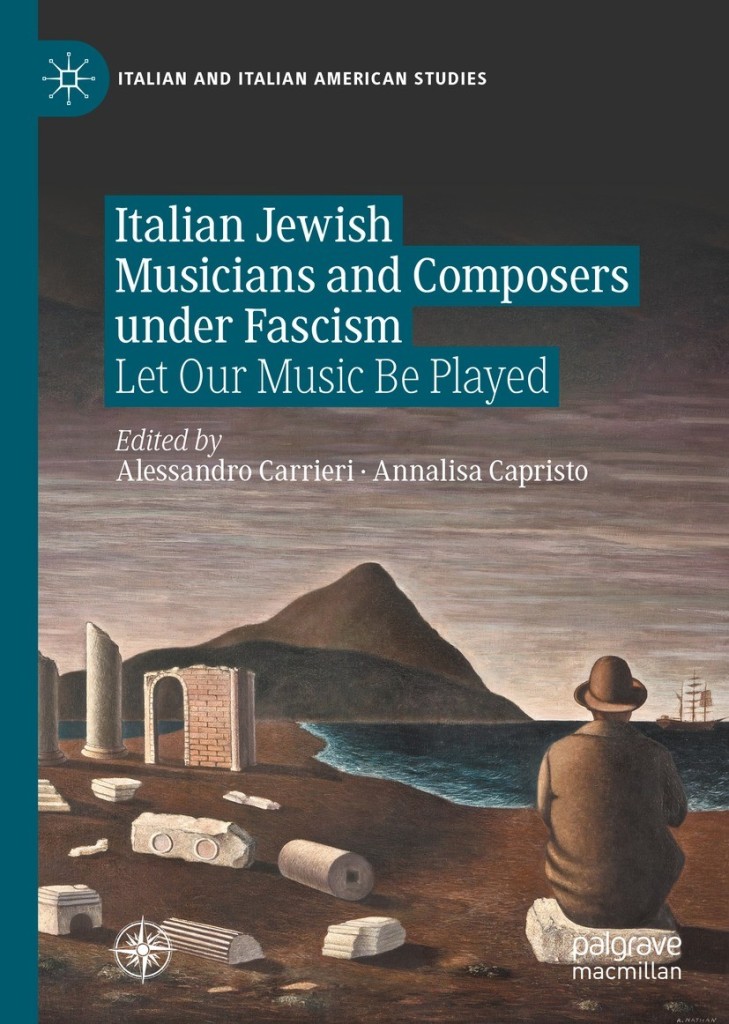
The last twenty years have witnessed significant developments in scholarship concerning antisemitism in Italy during the ventennio, the twenty-year period of Fascist rule (1923-1943). Thanks to historians such as Michele Sarfatti and Giorgio Fabre, the benign view which had hitherto prevailed with regard to the antisemitic laws promulgated by the Fascist government in 1938 — that these were adapted without conviction, in adherence to the dictates of a new alliance with Germany, and represented an unexpected about-face in the treatment of Italian Jews — have been definitively rebutted. The editors of this superlative collection of essays are aware of these newly-acquired insights (one of them, Annalisa Capristo, has co-authored an important book with Fabre), but also, to judge by the variety of approaches taken by the contributors to the book, equally cognizant of the complexities involved in applying these lessons to the field of music.
Read the rest of this entry »Sounding Jewish in Berlin: Klezmer Music and the Contemporary City. Phil Alexander. Oxford: Oxford University Press. 2021.
Reviewed by Zeke Levine
For the past two centuries, Berlin has maintained its role as a central crossroads of global politics, culture, and geography. The German capital is the focus of Phil Alexander’s Sounding Jewish in Berlin. Alexander probes the lively, yet complex contemporary Berlin klezmer scene, delving deeply into the ideological and aesthetic issues that shape it. While the klezmer revival has its roots in the United States, Alexander effectively and engagingly transports the reader to Berlin, an important locus for klezmer performance since the 1980s. Berlin, notes Alexander, is a complex setting for klezmer, given the city’s conflicted relationship with Jewish, particularly Eastern European Jewish, communities and folkways. Throughout the text, Alexander highlights thirty musicians and other creatives on the Berlin scene, framing the book around their experiences as well as his own extensive ethnographic experience as both a performer in, and keen observer of, the scene.
Read the rest of this entry »Jewishness, Jewish Identity and Music Culture in 19th-Century Europe. Ed. by Luca Lévi Sala. Bologna: Ut Orpheus. 2020.
Reviewed by Martha Stellmacher
The Enlightenment and the granting of civil rights to Jews in nineteenth-century Europe opened up new opportunities in society, and also in cultural and musical life. These processes were accompanied and reflected in the ongoing discussion of the so-called “Jewish question,” a debate in Jewish and non-Jewish circles concerning the understanding of Judaism and the status of Jews in the European societies. Though from the second half of the 19th century this term was increasingly used in antisemitic circles and finally taken up by the Nazis, it originally referred to a broad discussion on the political, national and legal position of a Jewish minority in a non-Jewish majority society. It partly touches in its nature upon aspects that we would call today “identity” —a term frequently used in the past decades to examine questions of belonging and self-understanding. Sala’s book assembles eleven studies touching upon many different aspects and layers of Jewish identity in the 19th century. These studies include the individual Jewish identity of certain composers and the expression of Jewish identity through music works up to the perception of Jews and Judaism by the gentile world.
Read the rest of this entry »Eastern Mediterranean Judeo-Spanish Songs from the EMI Archive Trust (1907-1912). Rivka Havassy and Edwin Seroussi. Jerusalem: Jewish Music Research Center, Hebrew University of Jerusalem. 2020.
Reviewed by Vanessa Paloma Elbaz
The EMI Archive Trust houses a collection of Jewish music from the Eastern Sephardim, originally released by Gramophone and Zonophone on 78 RPM between 1907 and 1912. This collection was released by the Jewish Music Research Center as a recording, with a physical CD and an online presence, including liner notes in English and Hebrew, song texts and their translations providing a wealth of material for this review. The collection includes songs in Judeo-Spanish, Hebrew, Turkish and Serbo-Croatian. Ladino selections are numerous, demonstrating the public presence of Ladino in Ottoman urban centers of this area at the time, despite the minority status of its community. The confluence of “the predominantly urban character of the late Ottoman Jewish society and its increasing middle class aspirations and leaning towards Westernization during the last decades of the Empire, coupled with the Jewish ethnicity of some key managerial figures of the European record companies, contributed to the presence of the song in Ladino in the early Eastern Mediterranean discography” (11-12). As was also the case with early Judeo-Arabic recordings, Jewish producers almost monopolized positions of local representation for international recording companies. This may have been partially due to the legacy of the Alliance Israelite Universelle’s training in French for Mediterranean Jews since the nineteenth century, which facilitated exchange and collaboration with European companies by the early twentieth century. Such collaboration allowed local musicians to create a dynamic market for the recording of Jewish artists and repertoires throughout the Ottoman empire and North Africa as recording technologies were developed and monetized. Another release (from 2008) from the JMRC in this broad category is focuses on Odeon’s recordings of Haim Effendi from 1907 in Turkey.
Read the rest of this entry »Musical Exodus: Al-Andalus and its Jewish Diasporas. Ruth Davis. Lanham MD: Rowman & Littlefield. 2015.
Reviewed by Samuel Torjman Thomas
The Iberian Peninsula has served as a focal point for enhancing our understanding of early modern racism, the age of nautical exploration, migration, memory, the advent of European colonialism, and perhaps most intensely as the site of interreligious intersectionality between Muslims, Jews, and Christians and its consequences. The notion of diaspora has informed the work of many scholars in the modern academy. A topic of great interest in fields such as cultural anthropology and ethnomusicology, and even its own field, Diaspora Studies, diaspora has also long been a bedrock topic for Jewish studies. In this edited volume, Musical Exodus: Al-Andalus and its Jewish Diasporas, we find valuable contributions to discourses about Iberian history, Jewish culture, diaspora, and musical development.
Within this edited volume, we find a close analysis of the dynamics involved in several animating factors of the Sephardi diaspora, including schism, exile, mass emigration, resettlement, intraethnic synthesis, postmodernist imaginaries, and transnationalism. The title suggests a pluralization of the Sephardi diaspora, as an experience that perhaps informs an array of diasporas. We are encouraged to consider this community’s experience of collective identity development as multitudinal, touching several disparate geographical centers and moments on a timeline that stretches over five centuries. Through the included chapters and their focus on a field of expressive culture (music), we can better appreciate how the Jewish experience of diaspora involves much more than the reinforcement of some overarching and monolithic transnational community. We learn how the dynamics of the Jewish diaspora experience provide the necessary context for new transnational layers to emerge. While fraught on so many levels and in so many ways, these dynamics are reconceived in this book and represented as the location of the endurance of expressive culture. Music serves as the vehicle of choice here, as a means of navigating the emergence and realization of these new diasporic Jewish identities rooted in reproducing vibrant and vital connections to a Sephardi (Andalusian) homeland. [1]
Read the rest of this entry »Melodías del destierro. Músicos judíos exiliados en la Argentina durante el nazismo (1933-1945). Silvia Glocer. Buenos Aires: Gourmet Musical Ediciones. 2016.
Reviewed by Vera Wolkowicz
Argentina has the largest Jewish community in South America. The migrations (or, rather, forced exiles) that led to such a status began in the late nineteenth century, and would increase during the rise of the Nazi party in Germany and through the Second World War. Silvia Glocer’s Melodías del destierro [Melodies From the Exile] delves into this history by focusing on the musicians who sought refuge on the other side of the Atlantic between 1933 and 1945. This book, written in Spanish and published in Argentina by Gourmet Musical, is the first to discuss and compile the histories and trajectories of exiled Jewish musicians in Argentina. While a large part of Glocer’s methodology relies on archival work (newspapers, concert programs, official documents, etc.) she combines it with methodologies driven from anthropology and oral history, such as interviews with some of these musicians, their families, friends and/or their students, not only exploring the history of exiled Jewish musicians during World War II, but tracing their legacies up to the present. Even though it is an academic text, its engaging prose and structure invite all kinds of readership (from scholars to the general public) without losing academic rigor, making it an invaluable contribution to the studies of Judaism, music and global history.
Read the rest of this entry »Transcending Dystopia: Music, Mobility, and the Jewish Community in Germany, 1945-1989. Tina Frühauf. Oxford: Oxford University Press. 2021.
Reviewed by Martha Sprigge
Transcending Dystopia examines how Jewish communities throughout postwar Germany reconstructed their musical identities in the aftermath of the Third Reich and the Holocaust. Author Tina Frühauf focuses on the individuals who helped to restore musical life in different urban locales. This is a welcome expansion of previous scholarship on Jewish music making in post-World War II Europe, which has been focused largely on individual composers, philosophers, and their works.[1] Though the book’s title uses community in the singular, Frühauf draws attention to the heterogeneity of Germany’s postwar Jewish communities by consistently attending to vectors of difference such as class, generation, regional identity, and religious tradition. Transcending Dystopia paints a complex portrait of Jewish musical life in the postwar period, and demonstrates the importance of attending to local dynamics when crafting historical narratives.
The concept of “cultural mobility” serves as a frame for this extensive study, which Frühauf views as “intrinsic to Jewish music in the postwar Germanys” (p. 7). She adapts the term mobility liberally to explore many angles of Jewish culture in Germany after 1945, from the lives of Jewish musicians forcibly displaced by the Nazi genocide, to the itinerant cantors and musicians who traveled throughout German cities to perform services for congregations lacking key personnel, to the mobility of musical objects, such as scores and performances broadcast on the radio. The result is a capacious volume that traverses the immediate aftermath of World War II to the earliest years of German Reunification, and takes the reader to cities across Germany East and West.
Read the rest of this entry »Anthology of Jewish Art Songs Volume IV, The Lazar Weiner Collection, Book 1: Yiddish Art Songs, 1918-1970. Yehudi Wyner, ed. Philadelphia: Transcontinental Music Publications. 2011.
Reviewed by Judith Tischler
The Emergence of the Yiddish Art Song is a fairly recent phenomenon. The full flowering took place in the United States in the twentieth century although the seeds were generously planted in Europe toward the end of the nineteenth century. One of the most prolific composers of Yiddish Art Songs in the United States was Lazar Weiner (1897-1982). He wrote one hundred and fifteen Art Songs for voice with piano accompaniment or with instrumental accompaniment other than keyboard.
A study of his songs will reveal a tension between his need to experiment with twentieth century idioms and his wish to reflect the folk heritage of his own past. The results are a number of “folk-like” songs which, because of their simplicity and tunefulness, were sung in almost every Yiddish speaking household in the Eastern United States and later in Israel. There is a much larger number of songs that are through-composed and that use a variety of compositional devices that could be adapted to any language. There are some outstanding examples, however, where the past and present meet; where “traditional” melodic patterns, modal scales, and cantillation-like phrases combine with complex harmonic structure and advanced piano techniques.
Read the rest of this entry »Klezmer: Music and Community in Twentieth-Century Jewish Philadelphia. Hankus Netsky. Philadelphia: Temple University Press. 2015.
Reviewed by Phil Alexander
Musician and educator Hankus Netsky’s long relationship to klezmer music began in 1974, when, as a New England Conservatory undergraduate student, he braved “an assortment of attitudes ranging from enthusiasm to disbelief” (2) to begin an investigation into his own family’s klezmer history. Returning to his research twenty years later, and now at the head of a resurgence in full swing, Netsky found that Philadelphia was one of the few places that still had enough veterans willing to share their experiences. This book, built around the lively and honest voices of around 60 musicians, caterers, and descendants of musical families, represents the fruits of that work.
Klezmer scholarship thus far has largely focused on historical Eastern Europe, (Walter Zev Feldman), on the cosmopolitan scene of early twentieth-century New York (Joel Rubin), or on the varied routes that the klezmer revival has spawned (Mark Slobin, Magdalena Waligórska, Phil Alexander). Therefore, this book fills an important gap, offering both a deep understanding of local musical practice and a filter through which to understand “the entire Jewish immigrant experience” (3). There is, of course, a paradox here: how far can geographical specificity be simultaneously representative of the processes and transformations of large-scale migration? As a result, the most enlightening parts of this excellent and very readable book are those that focus on the rich—and occasionally anachronistic—particularities of Philadelphian Jewish musical experience.
Read the rest of this entry »
